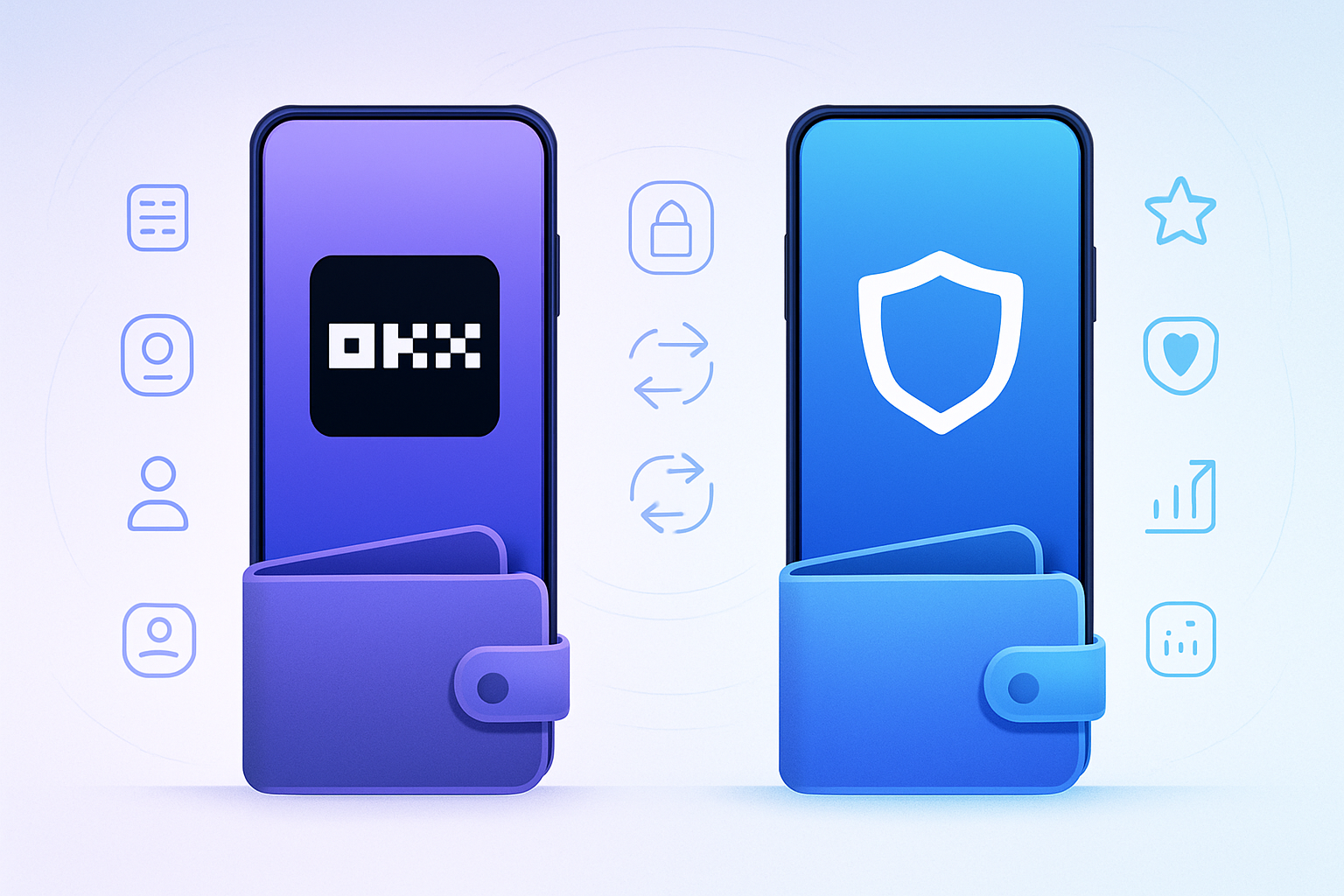Choosing between cold wallets and hot wallets is one of the first—and most critical—decisions for anyone entering the world of crypto storage. If you’re holding Bitcoin, Ethereum, or any other digital asset, the way you store your private keys will directly impact your security, convenience, and even your peace of mind. Let’s break down what each option offers, where they shine, and what risks you need to weigh before making a choice.

Understanding Cold Wallets: Security First
Cold wallets, also known as hardware wallets or offline wallets, are physical devices or paper printouts that store your private keys completely disconnected from the internet. This air-gapped approach makes them almost impervious to online hacks and malware attacks.
The most popular cold wallets are hardware devices like the Ledger Nano X or Trezor Model T. These tools generate and store your private keys within a secure element chip—never exposing them to your computer or phone. In contrast, a paper wallet is simply a printout of your public/private key pair (though these are less recommended due to physical durability concerns).
Why go cold? The primary reason is security. Since cold wallets aren’t connected to the internet by default, hackers can’t remotely access your funds. This makes them ideal for storing large amounts of cryptocurrency over long periods (“HODLing”). However, this security comes at a cost: usability. Transferring assets from a cold wallet usually requires plugging in hardware or scanning QR codes—a process that’s intentionally cumbersome to reduce risk.
“Not your keys, not your coins.” — The mantra behind self-custody emphasizes why wallet choice matters.
The Role of Hot Wallets: Convenience & Connectivity
Hot wallets, on the other hand, are software-based solutions that keep your private keys on an internet-connected device—typically a smartphone app (MetaMask vs Coinbase Wallet) or desktop extension (Exodus vs Electrum). Their greatest strength is convenience: you can send and receive crypto in seconds, interact with DeFi protocols, mint NFTs, or trade on decentralized exchanges—all without leaving your couch.
The trade-off? Exposure. Because hot wallets are always online (or at least periodically connected), they’re inherently more vulnerable to phishing attacks, malware, and device theft. For active traders or those experimenting with new protocols daily, hot wallets offer unmatched flexibility but require vigilance—think strong passwords, two-factor authentication (2FA), and regular software updates.
Feature Comparison: Cold vs Hot Wallet Essentials
If you’re still on the fence about which type suits you best—or whether you might want both—here’s a breakdown of their core attributes:
Cold Wallets vs Hot Wallets: Key Comparisons
-

Security Levels: Cold wallets offer offline storage, making them highly resistant to hacking and malware attacks. Hot wallets are connected to the internet, which increases their vulnerability to cyber threats.
-

Ease of Use: Hot wallets provide instant access to funds and are user-friendly for frequent transactions. Cold wallets require physical access and extra steps, making them less convenient for daily use.
-

Backup Options: Cold wallets rely on physical backups like seed phrases or hardware devices, which must be stored securely. Hot wallets often offer cloud backup or integrated recovery features, but these can be a security risk if not managed properly.
-

Typical Use Cases: Cold wallets are ideal for long-term storage and holding large amounts of cryptocurrency. Hot wallets are best suited for frequent trading, spending, or small balances.
| Cold Wallet 🥶 | Hot Wallet 🔥 | |
|---|---|---|
| Security Level | Maximum (offline) | Moderate (online exposure) |
| User Experience | Cumbersome but safe for long-term storage | Smooth & fast for daily transactions/trading |
| Main Risks | Theft/loss of device; physical damage; user error in backup process (how to backup securely?) | Phishing; malware; SIM swaps; browser exploits (hot wallet safety tips here) |
| Ideal For… | Larger holdings; HODLers; infrequent transfers; maximum security needs | Dapp users; NFT collectors; frequent traders; small balances on-the-go |
This table isn’t exhaustive but should help clarify where each option excels—and where it falls short. Many experienced users actually combine both approaches through a layered strategy known as “hot-cold separation.” Store most assets in cold storage while keeping only what you need for daily use in a hot wallet.
The User Experience Factor: What’s It Really Like?
If all this sounds abstract so far, let’s get practical. Setting up a hardware wallet like Ledger involves generating seed phrases offline and confirming transactions on-device—a process that might feel slow if you’re used to instant app-based payments. Meanwhile, opening MetaMask lets you swap tokens in seconds—but also means trusting browser extensions with sensitive data.
How do you currently store your crypto assets?
We’d love to know your preferred method for keeping your crypto safe. Share your storage style!
Your choice will ultimately depend on how much you value speed versus security—and how much risk you’re willing to accept as part of managing digital assets in an ever-evolving threat landscape.
For many, the real answer isn’t a binary “cold or hot”—it’s about finding the right balance for your needs. If you’re actively trading or interacting with decentralized apps, a hot wallet is essential. But if you’re holding a significant amount of crypto for the long term, keeping those funds in cold storage should be non-negotiable. This hybrid approach is now standard among seasoned users and institutions alike.
Practical Security: Layering Your Defenses
Think of your crypto wallet setup like layers of armor. Hot wallets are your everyday gear—fast, flexible, but exposed to the elements. Cold wallets are your vault, reserved for what you can’t afford to lose. Here’s how advanced users combine both:
- Daily spending & Dapps: Small amounts in a reputable hot wallet like MetaMask or Trust Wallet.
- Long-term savings: Majority of assets stored in a hardware wallet (Ledger vs Trezor comparison) or even multisig cold storage.
- Backups: Multiple copies of recovery phrases stored offline and geographically separated (backup guide).
- Security hygiene: Use strong passwords, enable 2FA where possible, and never share seed phrases—no exceptions.
This layered defense is especially important as new attack vectors emerge—from sophisticated phishing campaigns targeting browser extensions to physical threats against hardware devices. The days of relying on a single wallet type are over; adaptability is key.
When Things Go Wrong: Common Pitfalls & Recovery
No system is foolproof. Even with the best intentions, mistakes happen—lost devices, forgotten PINs, malware infections. What separates resilient users from those who lose everything overnight? Preparation and understanding recovery procedures.
- If you lose access to a hot wallet: Ensure you have access to your backup seed phrase (and that it hasn’t been compromised). Restore on another device after scanning for malware.
- If your hardware wallet fails: Don’t panic—your funds are on the blockchain, not the device itself. As long as you have the recovery phrase (and it’s kept private), you can recover using any compatible hardware or software wallet.
- If you suspect compromise: Move funds immediately to fresh addresses generated by uncompromised wallets. Always double-check URLs and avoid entering seed phrases online unless absolutely necessary (and only into trusted official apps).
The most tragic losses often come from skipped backups or complacency during setup. Take time to understand exactly how your chosen wallet handles recovery—and test restoring with a small balance before going all-in.
Future Trends: The Evolution of Crypto Wallets
The line between cold and hot wallets will only blur further as new technologies emerge. Smart contract-based “social recovery” wallets, biometric authentication, and multiparty computation (MPC) are already changing how we think about custody (explore smart contract wallets here). Some solutions now offer “warm” storage—a blend of usability with hardware-backed security for DeFi users who need both speed and peace of mind.
No matter what innovations arrive next, the fundamentals remain unchanged: protecting your private keys means controlling your crypto destiny. Whether you lean toward maximum security or daily convenience—or both—the tools exist today to build a robust personal custody plan.
[faq: Two common questions about choosing between cold and hot wallets for beginners]
Your crypto journey will evolve alongside technology—and so will your approach to storage. Stay curious, keep learning from trusted sources like our wallet guides library, and don’t hesitate to experiment with small balances first before committing significant assets.
The best solution isn’t what’s popular—it’s what fits your unique risk profile, goals, and lifestyle in this fast-moving digital frontier.




